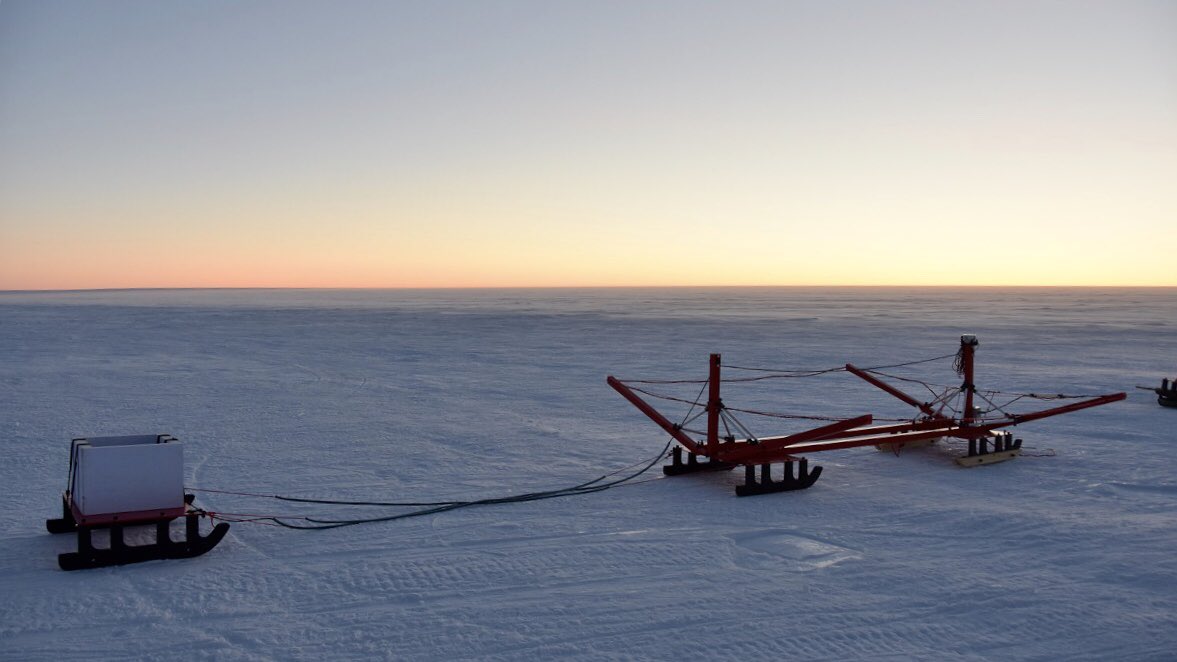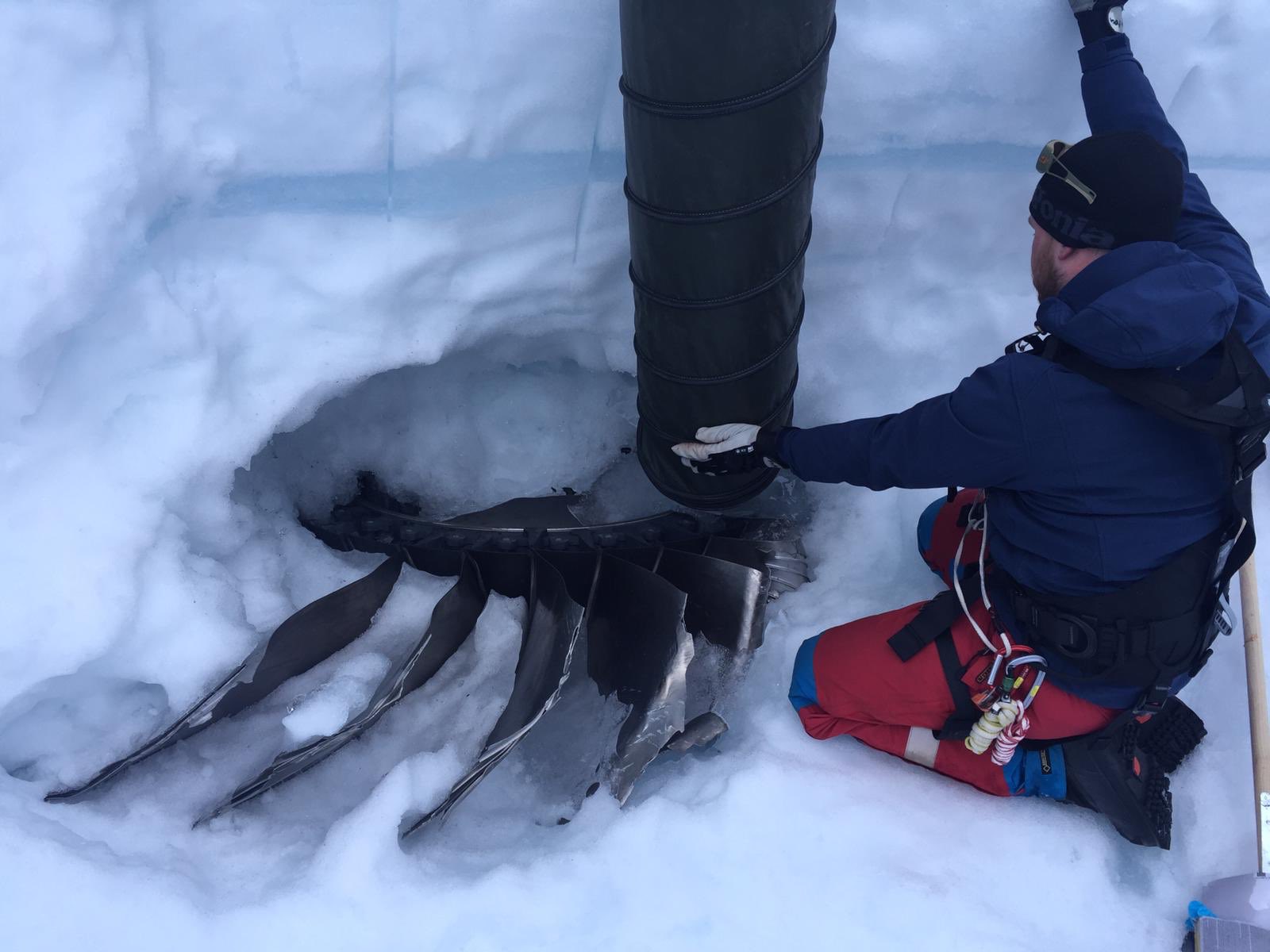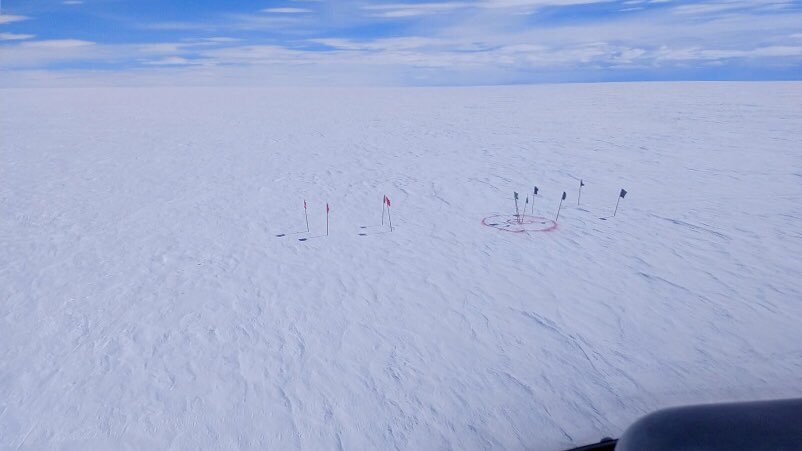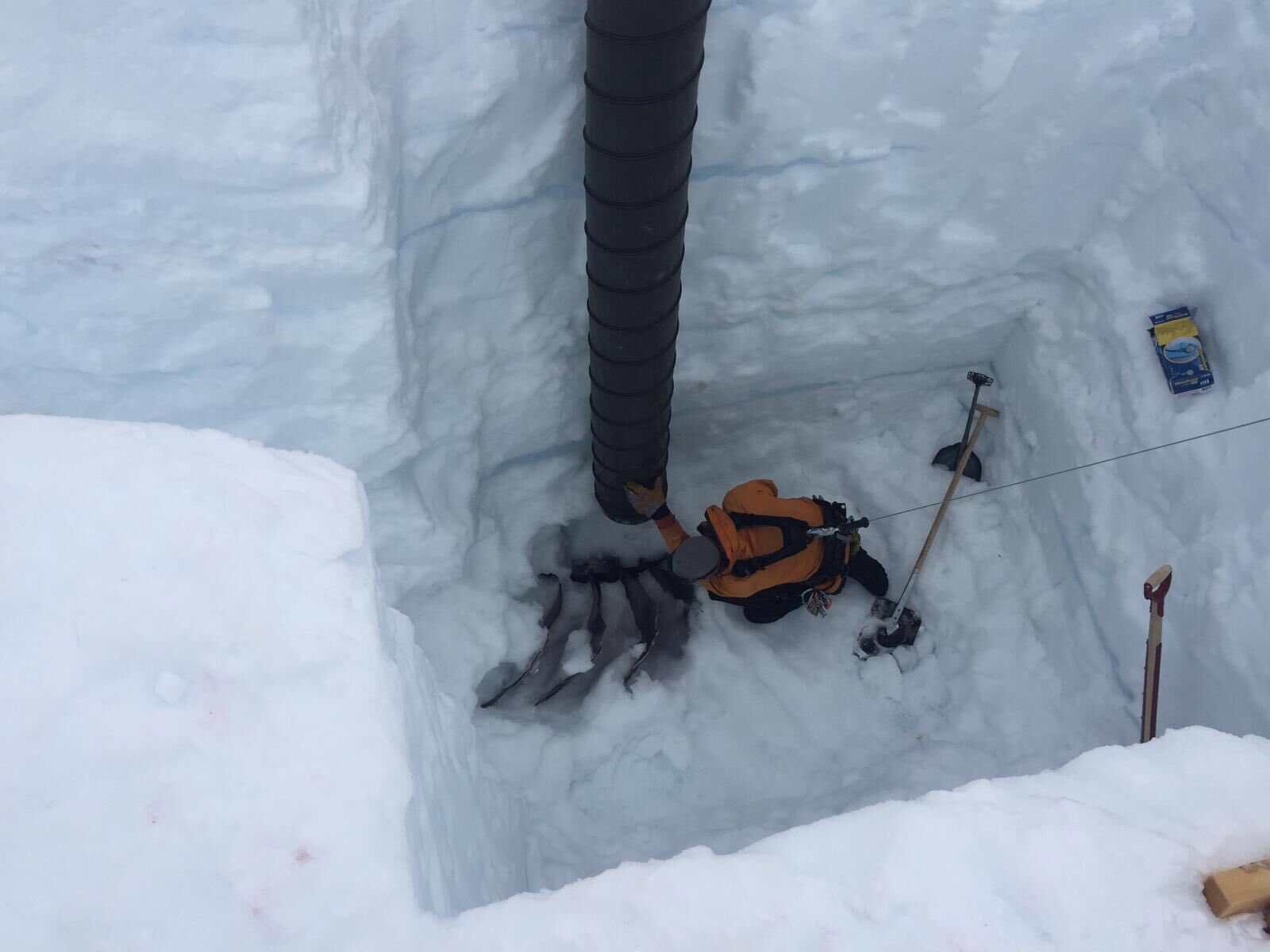On 30 September 2017, an Air France Airbus A380 (F-HPJE) was operating flight AF66 between Paris CDG, France and Los Angeles, United States. About four hours into the flight, while cruising over Greenland, a sudden technical malfunction occurred, causing significant damage to the the fan, first rotating assembly at the front of the engine, along with the air inlet and fan case of engine number 4.
The data contained in the flight data recorder (FDR) was used to determine the aircraft track and the aircraft position when the failure of the N° 4 engine occurred and to demarcate a search area to find the parts which had separated from the aircraft.
This area turned out to be a wasteland covered with ice, situated about 150 km southeast of the city of Paamiut located on the west coast of Greenland. Search and recovery operations of the fallen parts were very challenging as the area is remote and weather conditions are extreme most of the year.
Soon after the event, some parts were visually spotted and recovered but snowfalls prevented further helicopter flights to the site again. Snow finally covered all the parts that were still lying on the ground, preventing any new visual detection.
It was not possible to go to this region during the winter, as the safety level (cold temperature, short daylight, changing weather, presence of crevasses, etc.) was deemed not sufficient. Therefore, the closest time slot for considering search and recovery operations was Spring 2018.
Only recently, researchers succeeded in salvaging an important piece of the Air France engine. That part will now be sent to the USA to be examined by American engine manufacturer Engine Alliance under the supervision of the French Bureau of Enquiry and Analysis for Civil Aviation Safety or BEA (Bureau d’Enquêtes & d’Analyses).
Technical report: Accident to the Airbus A380 registered F-HPJE and operated by Air France
on 30/09/2017 en route over Greenland (October 2017 – June 2018 Searches Phase I & II)
Pictures © Austin Lines (Polar Research Equipment) and Thue Bording (Aarhus HGG)
?? Accident @Airbus #A380 F-HPJE @airfrance 09/30/2017 cruise above #Greenland / One of the sought after engine parts was found and will be sent to the USA to be examined by @enginealliance under the supervision of @BEA_Aero. @mankoff @FlemmingGEUS @onera_en pic.twitter.com/q1CMWc6xWA
— BEA | Bureau d'Enquêtes & d'Analyses ?? ?? ?? (@BEA_Aero) July 1, 2019
Missing airplane engine part found by GEUS led expeditions
GEUS led expeditions have helped locate and recover a missing piece of the A380-800 airplane engine from the Air France Flight 66 that passed over Greenland on 30 September 2017. This has been done in cooperation with French ONERA and others.
During the last two years, The Geological Survey of Denmark and Greenland (GEUS) has led four field campaigns to the Greenlandic Ice Sheet on behalf of the Danish and French safety investigation authorities, searching for the missing engine part, based on the extensive experience working on the ice and in Greenland.
“The search phase involved more than 13 weeks in Greenland, with seven weeks camping on the ice sheet, working in a crevasse field by foot, snowmobile, and robot, night-time operations, risk of polar bears, temperatures down to -35°C, and wind storms up to 25 m/s, with gusts up to 32 m/s,” explains field team leader Ken Mankoff, Senior Researcher at GEUS.
Preparation for the field campaigns involved additional fieldwork in Iceland, Switzerland, Sweden, and Denmark testing the sensors and practicing for the crevasse-field work.
Success
And all the work payed off. The search began with a 3 km by 5 km area but focused on a few points in Southern Greenland identified from an airborne search by the French Aerospace Lab ONERA.
“For this year’s search we invited Polar Research Equipment and their FrostyBoy robot to help us work safely in the crevasse field. We also invited the Aarhus University HydroGeophysics Group to join us with their Transient ElectroMagnetic instrument (TEM) which is normally used for mapping groundwater. Aarhus built a custom version, SnowTEM, that we could tow by snowmobile over the ice. Both FrostyBoy and the SnowTEM detected the part,” says Kenneth Mankoff.
The missing piece, a ~150 kg piece of titanium about 1 m3 was found buried under ~4 m of snow and ice on the Greenland Ice Sheet and in the middle of a crevasse field. Crevasses were located less than 2 m from the part and some in the surrounding field were 30 m wide.
All crevasses were snow-covered, making them invisible to the search and recovery team working among them, but the team was still able to move safely in the area thanks to the FrostyBoy robot and its Ground Penetrating Radar (GPR) used to detect and mark the crevasses. FrostyBoy was built and operated by Polar Research Equipment.
Challenging field work
The extraction phase involved two days of camping, digging, and melting on a small island of solid ice in the middle of the crevasse field. The team used chainsaws, shovels, an electric hoist, and a heater to dig down to and melt the part out of the ice.
Members of the Iceland Search and Rescue (ISAR) team helped extract the part. Logistic support for the campaigns was provided by Greenland Guidance. Helicopter flights were provided by Air Greenland. The work was ordered by the Danish and French safety investigation authorities, and the French will supervise the further analysis of the found piece.
“Locating and recovering the part was made possible with the help of many talented individuals from all of the organizations involved,” says Ken Mankoff.









